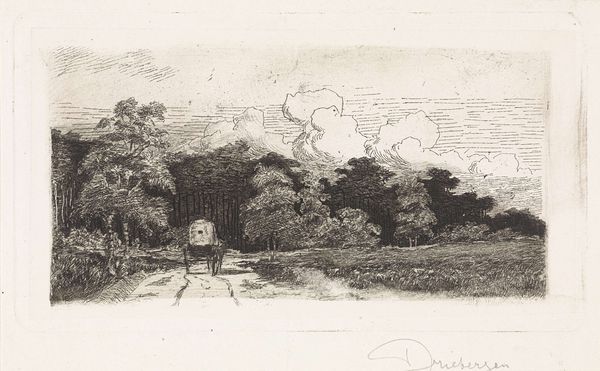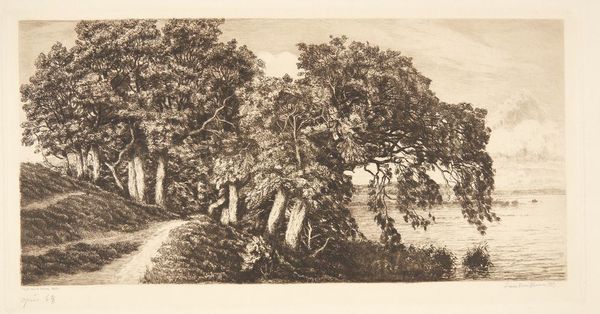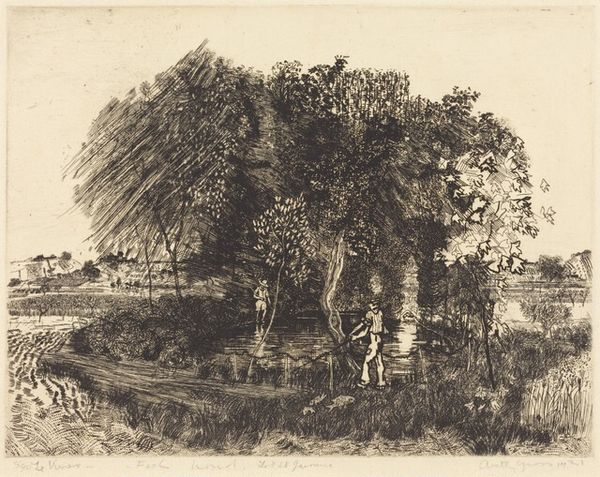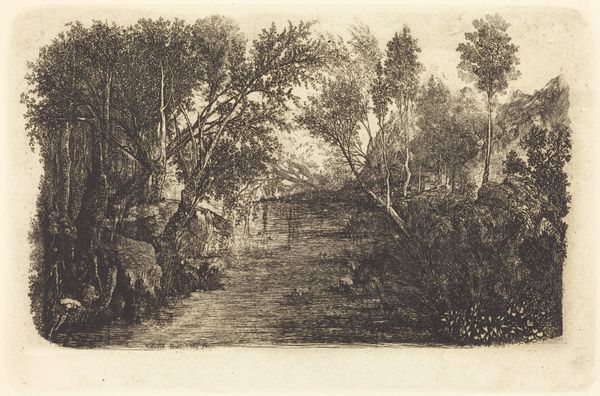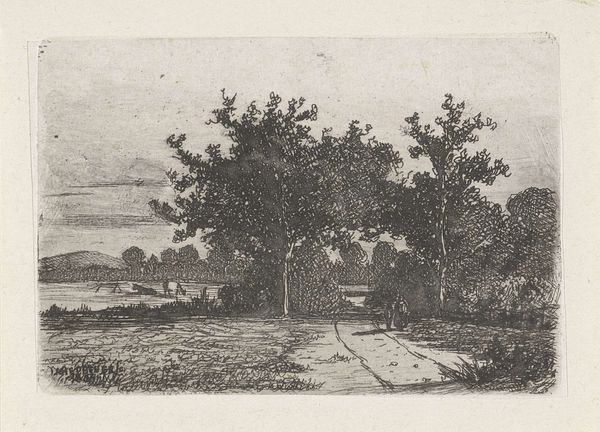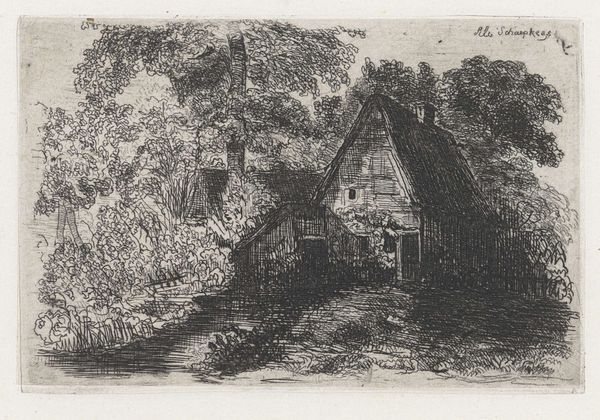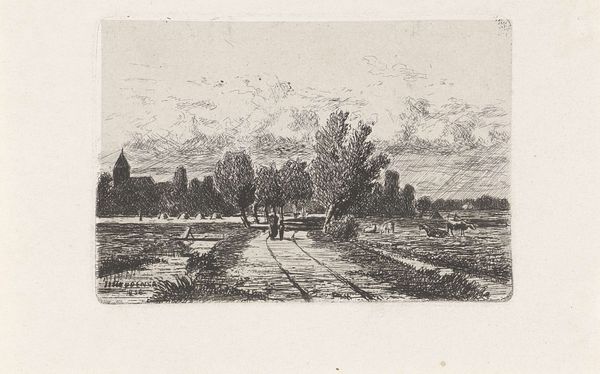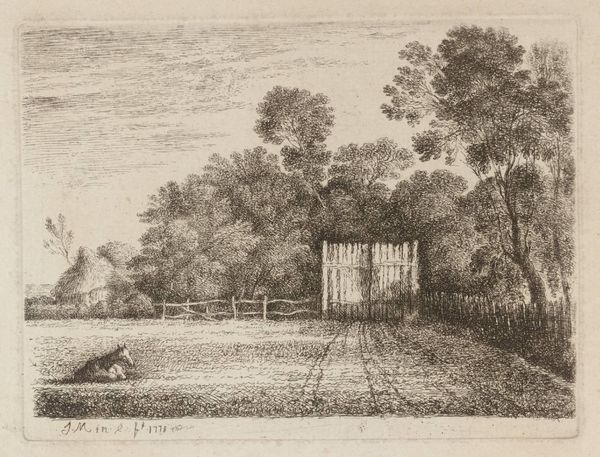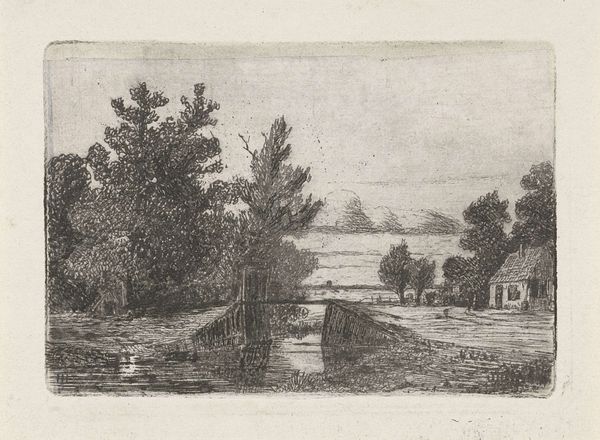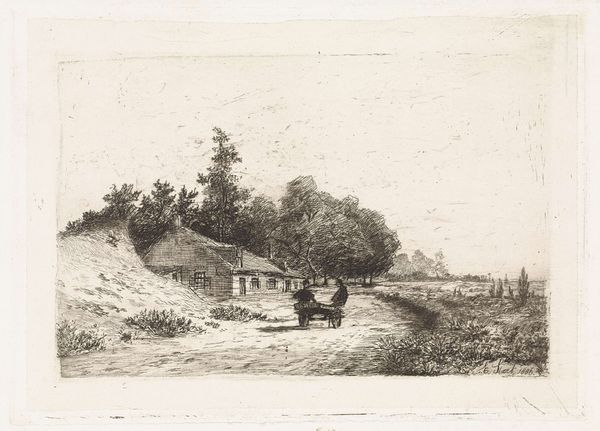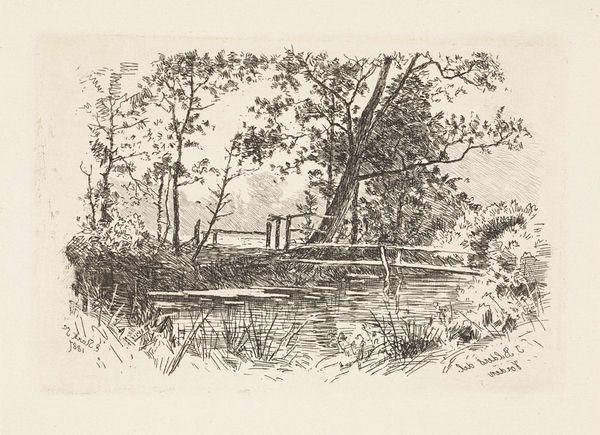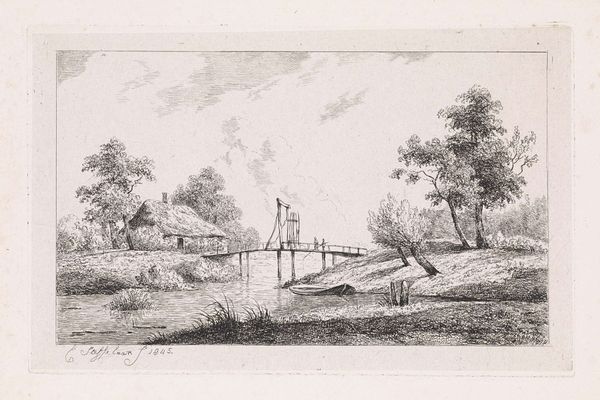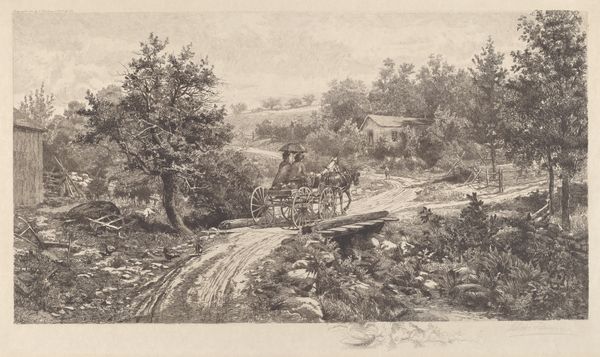
drawing, print, etching
#
pencil drawn
#
drawing
# print
#
etching
#
pencil sketch
#
landscape
#
pencil drawing
#
realism
Dimensions: height 123 mm, width 195 mm
Copyright: Rijks Museum: Open Domain
Curator: Elias Stark created this etching, "Huifkar op een weg te Driebergen" – which translates to "Covered Wagon on a Road in Driebergen"—possibly around 1887. It's currently held in the Rijksmuseum. What are your initial thoughts? Editor: It feels melancholic, doesn't it? The stark contrasts, the solitary wagon…it evokes a sense of quiet isolation. There’s a distinct absence, almost like the afterimage of a story that’s already unfolded. Curator: Stark captures that feeling through the masterful use of light and shadow. The wagon, receding into the distance, can also symbolize a turning away from the industrialized city towards nature. We see such motifs appear often when the populace fears modernity. Editor: I appreciate the suggestion of retreat. It brings up a critical question: for whom was this imagined rural simplicity accessible? The "covered wagon" wasn’t just a means of transport, it speaks volumes about class and opportunity. For marginalized groups, particularly those displaced by urbanization, this kind of retreat was more dream than reality. Curator: Indeed. It is important to keep in mind that while ostensibly apolitical, landscape scenes always serve some specific ideological purpose. Think, for example, of the enduring motif of "the road". Stark renders it particularly rough here, which speaks to the limits of travel. Editor: That reminds me how visual culture plays a role in constructing social hierarchies. Who gets to travel comfortably? Whose journeys are memorialized? There’s also a distinct romanticizing effect—the soft pencil shading suggests the peacefulness of rural life, which is often at odds with the very difficult agrarian reality. Curator: Absolutely. The artist has transformed pencil markings into a form of personal visual storytelling. If we compare it to contemporary landscape depictions, we note the absence of peasants or rural laborers toiling in the fields. Perhaps that choice is to present a specific idyllic view of the past? Editor: A constructed vision, no doubt. The imagery invites a contemplation of belonging and exclusion, and it provokes urgent considerations of progress and power. Art like this is never truly innocent; it reflects, reinforces, and sometimes resists dominant narratives. Curator: I hadn't thought of the wagon as necessarily moving away, but simply enduring, a permanent fixture along the country roads. Thank you for enriching the experience of witnessing it through these important sociohistorical lenses. Editor: And thank you for illuminating the symbols embedded within. It truly brings home how essential interdisciplinary understanding is to engaging with historical artworks responsibly.
Comments
No comments
Be the first to comment and join the conversation on the ultimate creative platform.
